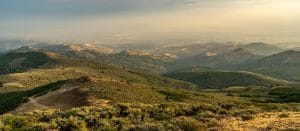When planning a post-rut or late-season elk hunt on public land, understanding the concept of sanctuaries is crucial. Sanctuaries are areas where elk retreat to avoid hunting pressure, making them the primary focus for hunters seeking success during these challenging times. But with countless potential sanctuaries across a unit, how do you identify the ones that actually hold bull elk during the season? The key is to find the specific sanctuaries where elk are likely to congregate.
What is a Sanctuary?
In its simplest form, a sanctuary is a location that hunters tend to avoid, creating a safe haven for elk. These areas experience lower hunting pressure compared to their surroundings, making them ideal for elk to rest and feed without disturbance. Sanctuaries are often defined by features that discourage hunters, such as long distances, rugged terrain, boundaries, or dense vegetation.
Factors That Create Sanctuaries
Several factors contribute to the formation of sanctuaries. Here are the most common ones:
1. Distance from Motors
One of the most reliable indicators of a sanctuary is its distance from roads and motorized trails. Many hunters prefer to stay within a mile of accessible roads, leaving areas farther away with significantly lower hunting pressure. Elk, aware of this pattern, often retreat to these remote locations during the post-rut and late season. The farther you venture from roads, the more likely you are to find a sanctuary.
2. Rugged Topography
Elk are remarkably adaptable to challenging terrain, often using steep, rocky, or otherwise difficult landscapes as a buffer against hunters. While elk may not live exclusively in these areas, they frequently use them as escape routes or transitional zones. Hunters, being human, tend to avoid such rugged terrain, creating a natural sanctuary just beyond these barriers. For example, a steep half-mile climb might deter most hunters, but elk might gather just beyond it.
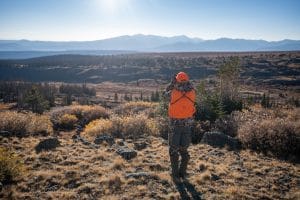
3. Boundaries
Boundaries—whether between public and private land, state lines, or limited-entry units—are another common feature of sanctuaries. Many hunters avoid these areas to prevent accidentally crossing into restricted zones or pushing elk onto neighboring properties. This avoidance creates a buffer zone of lower hunting pressure on both sides of the boundary, often extending up to a mile. Elk frequently take advantage of these areas, making boundaries a reliable indicator of potential sanctuaries.
Hunters can use boundaries to their advantage, but need to vigilant about hunting in the correct unit. Modern technology like GOHUNT Maps will help you, but it is always up to the hunter to know where they are and to stay in places they are allowed to hunt.
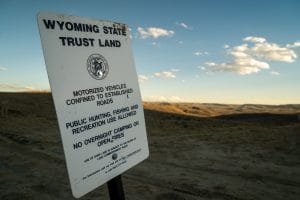
4. Dense Vegetation
Thick, difficult-to-navigate vegetation, such as deadfall, blowdowns, or dense alder thickets, can also create sanctuaries. These areas are often avoided by hunters due to the physical challenge they present. Elk, however, are more than willing to navigate these obstacles to find safety. If you’re willing to push through these “nasty” areas, you may find elk hiding just beyond.
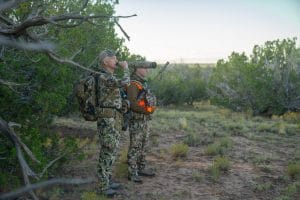
5. Grizzly Bear Country (Unique to MT, ID, and WY)
In regions with grizzly bears, the presence of these predators can significantly reduce hunting pressure. Many hunters are uncomfortable with the risks associated with hunting in grizzly country, creating larger areas of lower pressure. To safely hunt in these areas, it’s essential to educate yourself on bear behavior, maintain a clean camp, and properly handle harvested game to minimize risks.
Why Sanctuaries Matter
Sanctuaries are critical to elk survival, especially during the post-rut and late season when hunting pressure is at its peak. By identifying and targeting these low-pressure areas, hunters can significantly increase their chances of success. The key is to think like an elk and focus on the areas that other hunters are likely to avoid.
Finding Your Own Sanctuary
Every hunter may have their own idea of what constitutes a sanctuary. It could be a small patch of dense vegetation, a remote ridge, or a hidden drainage that others overlook. If you’ve ever come across a spot and thought, “No one else would bother with this,” you’ve likely found a sanctuary.
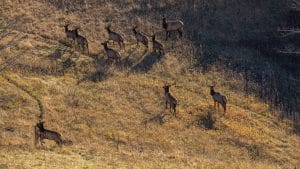
Final Thoughts
Sanctuaries are the common denominator in successful post-rut and late-season elk hunting. By understanding the factors that create these low-pressure areas—distance, topography, boundaries, vegetation, and even grizzly bears—you can refine your hunting strategy and increase your odds of finding a public land bull. Remember, the key is to go where others won’t, and in doing so, you’ll discover the sanctuaries that hold the elk you’re after.
If you’d like to learn more about hunting pressure, migratory vs. non-migratory elk, clothing systems and more, check out the modules on OutdoorClass as well as our 90+ page Elk Hunting E-guide.



